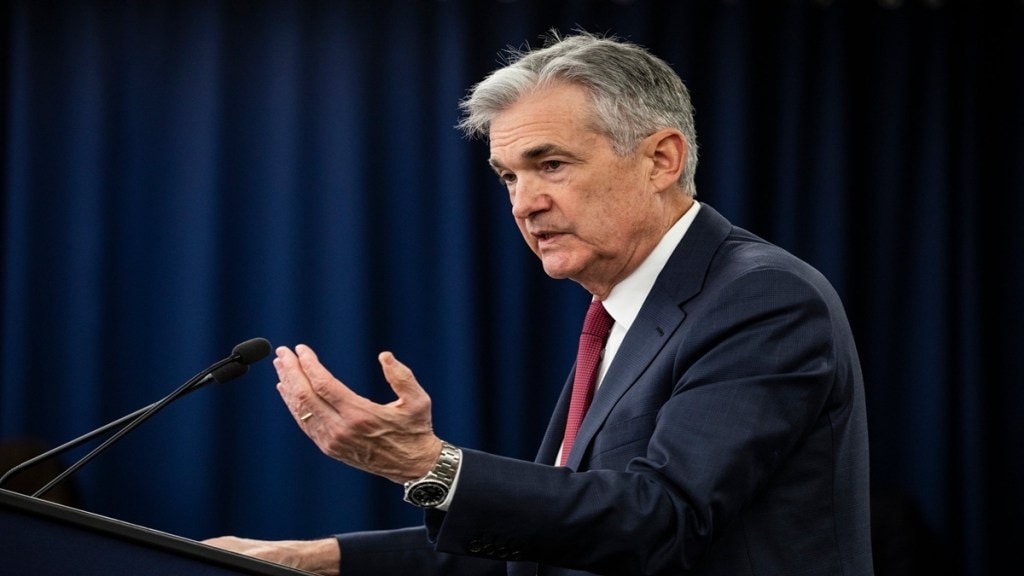For the first time in 2025, the US Federal Reserve reduced the interest rates on Wednesday. The Fed delivered a widely predicted 25-basis-point rate decrease, while suggesting two more cuts this year and only one in 2026.
A lower interest rate regime is typically favourable for the economy. Lower rates help borrowers refinance loans at more favorable rates, and companies stand to benefit from a lower rate regime as well. However, the reason behind the rate cut of 25bps in September is something to be concerned about.
The inflation in the US still remains above the Fed’s target. So, it was the deteriorating labour market conditions that led the FOMC members to go for the September rate cut.
Markets, meanwhile, will remain buoyant. “Historically, when the Fed lowers rates, capital tends to shift out of safe assets such as U.S. Treasuries and bank deposits into riskier assets, including equities, private equity, venture capital, and emerging markets. The anticipated rate cuts in 2025 and in 2026 are expected to boost the valuations of risky assets,” says Nachiketa Sawrikar, Fund Manager, Artha Bharat Global Multiplier Fund.
Why the 50bps Rate Cut Was Avoided
The forecast 50-basis-point rate decrease did not happen. In Powell’s own words, here’s why: “There wasn’t widespread support at all for a 50 basis point. I think we’ve done very large rate hikes and very large rate cuts in the last five years, and we tend to do those at a time when you feel that policy is out of place and needs to move quickly to a new place. That’s not at all what I feel certainly now, I feel like our policy has been doing the right thing so far this year.”
Chair Jerome Powell’s tone was cautious, characterizing the action as ‘risk management.’ In the press conference, Powell acknowledged, “In the near term, risks to inflation are tilted to the upside and risks to employment to the downside—a challenging situation. When our goals are in tension like this, our framework calls for us to balance both sides of our dual mandate. With downside risks to employment having increased, the balance of risks has shifted. Accordingly, we judged it appropriate at this meeting to take another step toward a more neutral policy stance.”
How FOMC Members Voted
The Federal Open Market Committee’s (FOMC) decision to reduce interest rates by 25 basis points, rather than a larger 50 basis points, underscores the Federal Reserve’s continued status as an independent body, especially in light of pressure from the White House and President Trump for a more substantial rate cut.
The 12-member committee finalized the decision to cut rates by 25bps by an 11-1 vote. Stephen Miran, a recently confirmed Trump economic adviser and newly sworn member of the Fed’s Board of Governors, cast the sole dissenting vote. Voting against this action was Stephen I. Miran, who preferred to lower the target range for the federal funds rate by 1/2 percentage point at this meeting.
Fed Governors Christopher Waller and Michelle Bowman, both Trump appointees, advocated for earlier interest rate cuts, ultimately settling for a quarter-point reduction.
Fed Chair Powell stated that with 19 Federal Reserve members and 12 having voting power, a single governor would need to be exceptionally persuasive to alter the outcome of a decision.
Going Forward
The dot plot revealed that the median participant projects that the appropriate level of the federal funds rate will be 3.6 percent at the end of this year, 3.4 percent at the end of 2026, and 3.1 percent at the end of 2027. This path is 1/4 percentage point lower than projected in June.
Ross Maxwell, Global Strategy Lead at VT Markets says, “Whilst the rate cut was expected, it is of more note to listen to what Fed Chair Jerome Powell said in the Press Conference afterwards, where he mentioned that policy decisions remain challenging, and the committee members are still split on further rate cuts, with 10 out of 19 policy makers seeing two or more rate cuts this year.
Financial markets are likely to welcome the rate cut in the near term, as lower borrowing costs ease pressure on households and businesses. Equity markets may see short-term support, though bond yields could remain volatile as investors weigh growth concerns against inflation risks.”
In the months ahead, rising inflation and further weakness in the job market may spoil the party for the markets. Investors need to be cautious about these two factors that can change the global investing scenario quickly.
